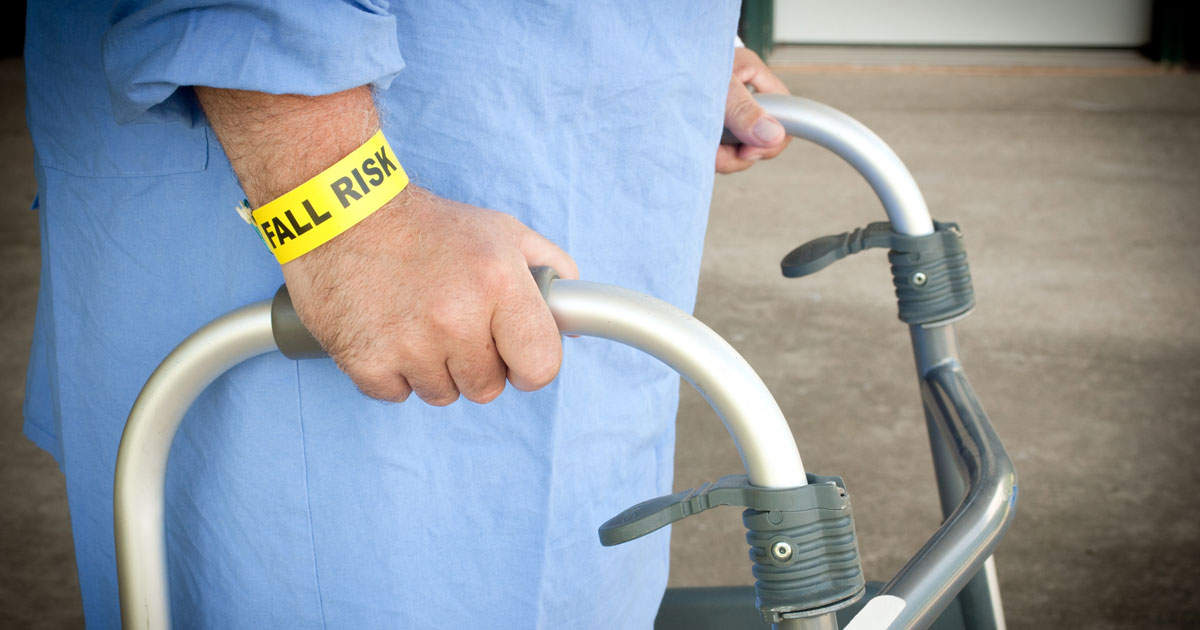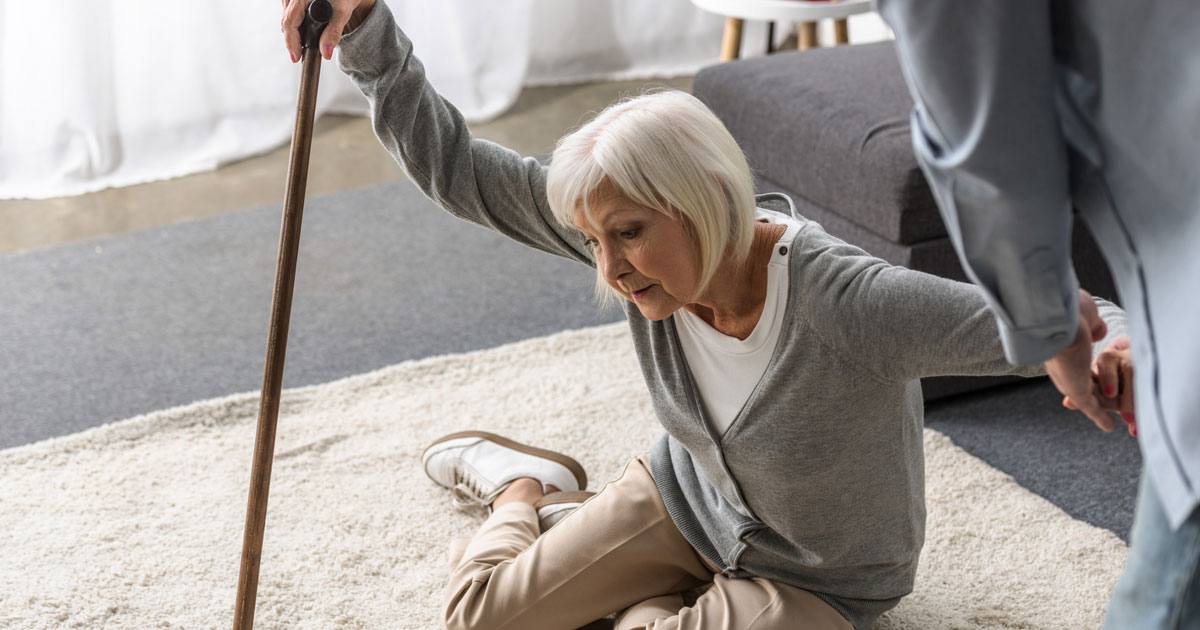
Accidents happen, and everyone is bound to take a fall at one time or another. For older adults over the age of 65, however, the likelihood of taking a fall is far greater, making falls a leading cause of serious injury for seniors. According to the Centers for Disease Control and Prevention (CDC), more than one in four older adults fall every year, about 30%. Even more troubling is the fact that the chances of future falls double after the first.
In order to best combat this widespread issue, it is important to understand the root causes of falls, the impact that falling can have on older people, and ways to prevent falls and reduce the risk of falls.
Common Causes of Falls
People of all ages fall for a wide array of reasons. The same is true for aging adults, but as with most other health conditions, older patients are at a significantly higher risk. While there is no comprehensive list to encompass the various causes of falling, these are some of the more common causes of falls.
Conditions That Increase Fall Risk
- Overall health issues such as issues with the feet or lower body and low blood pressure make falling more likely.
- Lack of muscle strength is another common age-related problem, also known as sarcopenia. This can cause issues with balance as well as rapid changes to blood pressure when sitting up or standing, increasing the person’s risk of falling.
- Health conditions such as heart disease, diabetes, and other chronic issues can often impact blood pressure or balance, increasing the risks of falling.
- Issues with vision and hearing often impact older adults and can make it harder to avoid whatever obstacles may lead to a fall.
Other Fall Risk Factors
- Some medications like antidepressants or sedatives can cause problems with balance, focus, and reaction time, potentially increasing the risk of falling.
- As mentioned previously, older adults who have had previous falls are twice as likely to take a fall again.
- Environmental issues and general problems with cleanliness and organization can make it more likely for a senior to trip and fall.
- Improper footwear can also make balancing more difficult and lead to a fall.

Injuries Caused in Falls
While many falls luckily result in no injury at all, the Centers for Disease Control claim that about 20% of falls result in serious injuries like broken bones or head injuries. A study for the American Journal of Public Health on the costs and frequency of fall-related injuries found that 20% to 30% of falls cause moderate to severe injuries for older patients.
The long-term impact of serious falls can be significant, in some cases leading to a lack of independence for the older patient, confidence issues, and general issues with day-to-day life. Some of the injuries most often associated with falls for aging adults are:
- One of the most common injuries to get from a fall are broken bones. Fractures to joints like the wrist and ankle can cause severe pain, and a more serious broken bone like a hip fracture can cause long-term mobility problems.
- Especially for elders who are at an ever-greater fall risk, a serious fall can significantly impact confidence. As the first fall increases the future risks, this knowledge may cause the person to fear falls going forward, becoming less active and ultimately reaching a point where they are even more likely to fall again.
- Serious head injuries are one of the greatest risks when dealing with a serious fall. Concussions and contusions can be life threatening, and some medicines such as blood pressure medication and heart medication can increase the risks of serious brain injury as well.

What to Do After Falling
It is not always immediately clear if a fall has resulted in any real injury, so it is important to take things slowly. If you have fallen, try to stay calm and breathe deeply. Carefully consider whether you have felt any injury, and try to move slowly in case any awkward positioning winds up causing an injury, nonetheless.
If you are able to move, but cannot fully stand, try to slowly crawl to a nearby chair or step where you can try to fully sit up. If you are ultimately unable to rise, or believe you may indeed have suffered an injury from the fall, reach out to a family member local emergency departments immediately.
The Cost of Falls
The personal toll after a fall can at times be staggering, and unfortunately, the same can be true of the financial burden as well. According to the American Geriatrics Society, the total medical cost for fall-related treatment in 2015 was over $50 billion, with Medicare and Medicaid covering about 75% of the bill.
Pre the National Center for Injury Prevention and Control’s Web-Based Injury Statistics Query and Reporting System (WISQARS), over 3 million seniors have to be treated for fall injuries by emergency departments every year. Being one of the leading causes of injuries in adults over 65, the CDC also reports that falls account for more than 95% of hip fractures, and are the most common cause of traumatic brain injuries.

Fall Prevention Strategies
When dealing with such high stakes and heightened risk factors, it is important to develop fall prevention strategies, and to take proper precautions to avoid some of the causes of falls altogether.
Check in With Your Doctor
One of the most important things to be done to prevent falls is simply getting regular checkups with your health care professional. If you have issues with your vision, be sure to see your eye doctor and make sure your prescription is up to date. It can be better to avoid using progressive lenses as they may cause more confusion on how near or far an obstacle is in a given moment.
Your primary health care provider can help you to review any medications you are taking, whether prescribed or over-the-counter, to see if any are causing problems that might lead to increased fall risk. Overall, your primary care doctor can help evaluate your overall risk of falling and give you their expert opinion for how you can improve your health and reduce your risks.
Diet and Exercise
As with general health, proper diet and exercise goes a long way in helping to prevent falls. Regular exercise increases muscle mass and helps to develop and maintain balance, core and lower body strength, and reaction time which can help in stopping a fall. Balance and strength focused exercises like Tai Chi, Pilates, and others can also be very helpful in improving strength and mobility.
Some dietary supplements such as vitamin D can also aid in preventing falls, as vitamin D is responsible for helping the absorption of calcium and the maintenance of healthy bones. Your primary care doctor will be able to give you more specific dietary advice based on your individual needs.
Smoking and alcohol consumption can decrease bone mass, so abstaining from both can be incredibly important for fall prevention. Getting enough sleep is also important, as sleep deprivation can make falling more likely.
Make Changes at Home
Adjusting the way you live at home can make a huge impact when trying to prevent falls. As mentioned earlier, organization is paramount, as loose objects on the floor or out of view can be a huge risk and lead to falls. Adding additional or brighter lighting can also help older individuals to see better and avoid more obstacles that could lead to a fall.
Making your home safer with add-ons like grab bars for the toilet and tub, a seat for the shower, and railings on both sides of the stairs, can work wonders in decreasing the risks. Keep non-slip mats in the showers or other areas that are more often wet to avoid slipping, or buy non-slip slippers for inside the house. Ensure there are no big risks like low hanging lamps or loose rugs which could pose a consistent risk.
In general, try and adjust the way you arrange your home so that things are as easy to reach as possible for you. Avoid storing things you use regularly in high up places that would require you to climb up to reach or in lower spots that would require you to bend down into a less than comfortable position.
Resources
Whether you are in need of resources to care for yourself or an older loved one, ensuring that you have recent and helpful information at your fingertips can make all the difference towards staying healthy and safe.
Keystone Health has a large selection of helpful resources for senior health, including fall prevention strategies and more. If you or your loved one are an Idaho resident in the greater Boise area, explore the services available from Keystone and see how we can help you.
